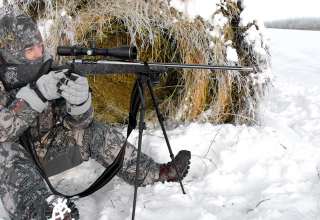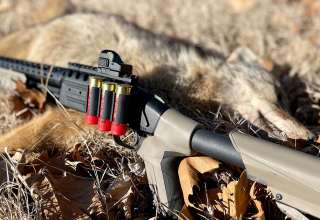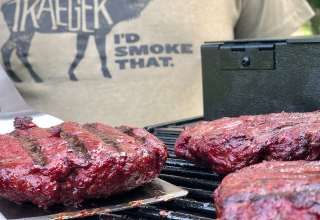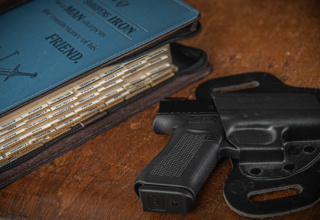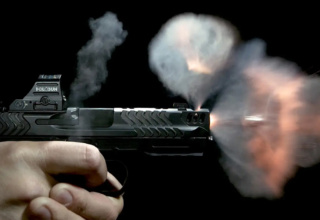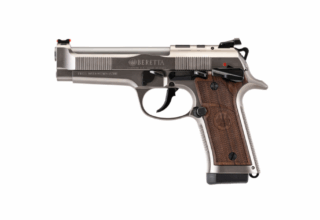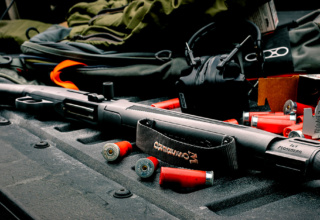The bucks are still out there. Here’s how to keep after them when the temperature takes a dive.
by Heath Wood
A few years ago, a friend and I were 20 feet up in a tree, hunting for deer on a blue-cold morning. My buddy had come along to run the camera and I was hoping to provide the action. The temperatures were in the mid-teens with a slight wind, and I was not prepared for such a cold sit. Had my friend not been there, I would have probably thrown in the towel. The only thing not freezing that morning was my pride and the anticipation of good deer movement in such chilling temperatures.
The plan was to sit all day and wait for a mature buck that I had seen earlier in the season. Unfortunately, deer movement that morning fell flat. Close to noon, a large doe strolled toward us through the timber. Unable to take the cold any longer, I dropped the doe instead of waiting for the buck.
I admit it…the cold temperatures won the day.
During the latter part of hunting season, we all can become fatigued. Some hunters, facing shorter days and colder temperatures, simply lose the drive that sustained them earlier in the year. That’s unfortunate, because the late season can be both exciting and productive.
The “after-rut” period is a great time to hunt near food sources. Following the mating season grind around the end of November, bucks become fatigued and the need to recharge their bodies is essential if they are to survive the winter.
Another factor that makes the late season a great time to tag a mature buck is the second estrus cycle. Does that didn’t get bred during the primary rut come into estrus around 28 days later. Some hunters call this the second rut. It is not as frenzied a time as the main rut, but it does provide opportunities to find a mature buck pursuing the remnant hot does.
During the latter part of the season, there is also a less hunting pressure than there is in October and November. With less stress, bucks often pop up when and where you may not expect them to show.
So, while the late season offers many good hunting opportunities, hunters must contend with the cold. The key is dressing for the cold conditions.
Topping the list is protecting your hands and feet. When these become uncomfortably cold, there not only exists the potential danger of frostbite or hypothermia, you simply cannot maintain the necessary focus on the hunt.
Begin by investing in quality gloves. As with anything, the old saying, “You get what you pay for,” rings true. The best strategy we’ve found is to wear a pair of super-thin nylon or polypropylene liner gloves inside of amply-sized insulated and waterproof gloves. The liner helps to minimize perspiration, which can not only make you cold, but also allows you to more easily take the bigger gloves off and on.
I have also recently began carrying the HME rechargeable handwarmer. One charge provides several hours of warmth that really helps in extreme cold. With this combination, I never have to worry about cutting my hunt short because of my fingers going numb.
As for my feet, the same—quality makes all the difference when choosing the proper boots and socks. I have had good luck with Lacrosse’s new Atlas boots to keep my feet warm and dry. They have 400 grams of insulation, which is rather “light” for some hunters, yet they keep my feet dry—and that’s essential for warmth.
As for socks, cotton is a big no-go. Instead, I wear a moisture wicking sock that keeps my feet dry, or a combination merino wool outer sock and a polypropylene liner sock. The wool provides the insulation while the liner sock wicks moisture away from your skin, keeping you warmer.
When buying socks, make sure they are not too thick for your boots. The more the fibers compress, the less insulation they provide. The trick is to find the ideal balance so the boot fits well with winter-grade socks but not so tight as to degrade insulation performance.
The next body part that gets attention is my torso. Here, I always wear a compression-style base layer, followed by two layers that include a fleece-lined hoodie and top it off with a well-insulated parka-style jacket that breaks the wind and is moisture-resistant.
This year, I have had a few hunts with temperatures in the teens while wearing Scent Lok’s new BE:1 Fortress Parka and Bibs. These are waterproof, windproof, and insulated to keep hunters warm in extreme cold temperatures without being bulky. That’s especially important if you like to bowhunt in the late season. By wearing the parka with two underlayers, I stay warm the entire hunt.
Another area that can’t be overlooked is the head. Here is where we lose a lot of body heat, which is why it is crucial to keep your head covered and insulated. I wear a knit cap and facemask to keep as much heat trapped as possible.
When temperatures become extreme, ground blinds can really take the bite out of a long day of sitting. Try for a model that offers ample space to not only sit comfortably, but also gives you room to stand up. The Mantis blind from NAP is a good example. It has plenty of height and legroom, and easily accommodates a quality blind chair like the ALPS OutdoorZ Stealth Hunter. Combine the blind and chair with a small portable heater and your all-day sit can be downright luxurious.
Late-season hunting is a great chance to harvest a mature buck, yet many hunters throw away this opportunity because of extreme cold temperatures. With the right gear and intelligent layering, beating the cold is an easy challenge to overcome.







